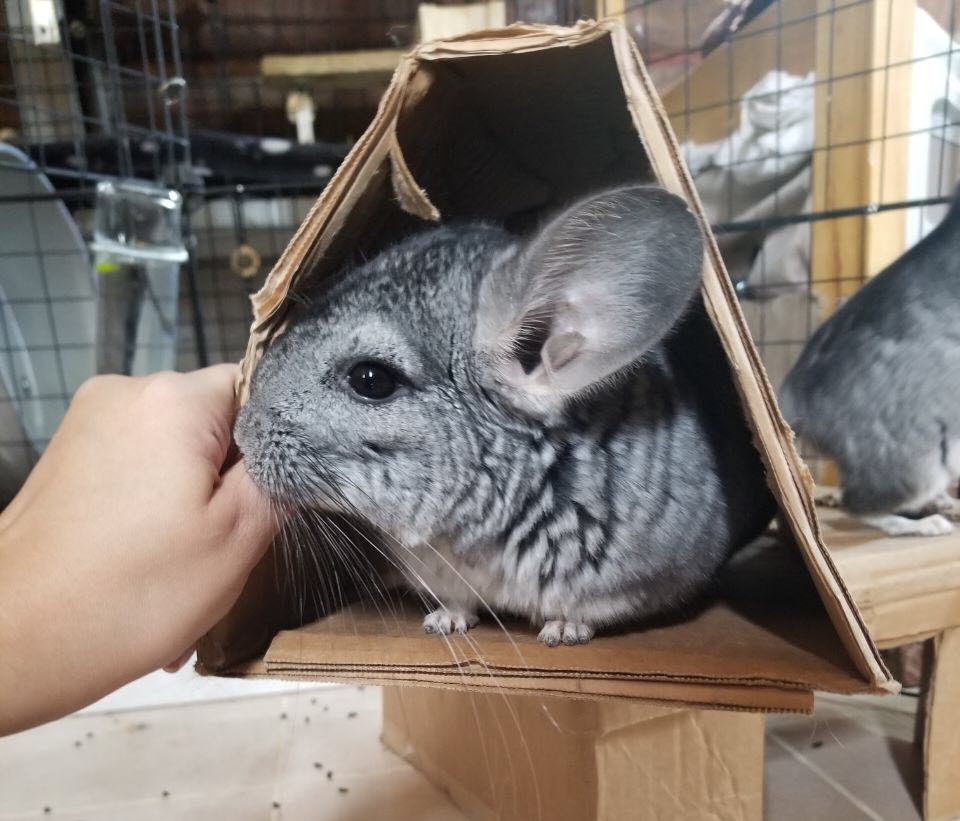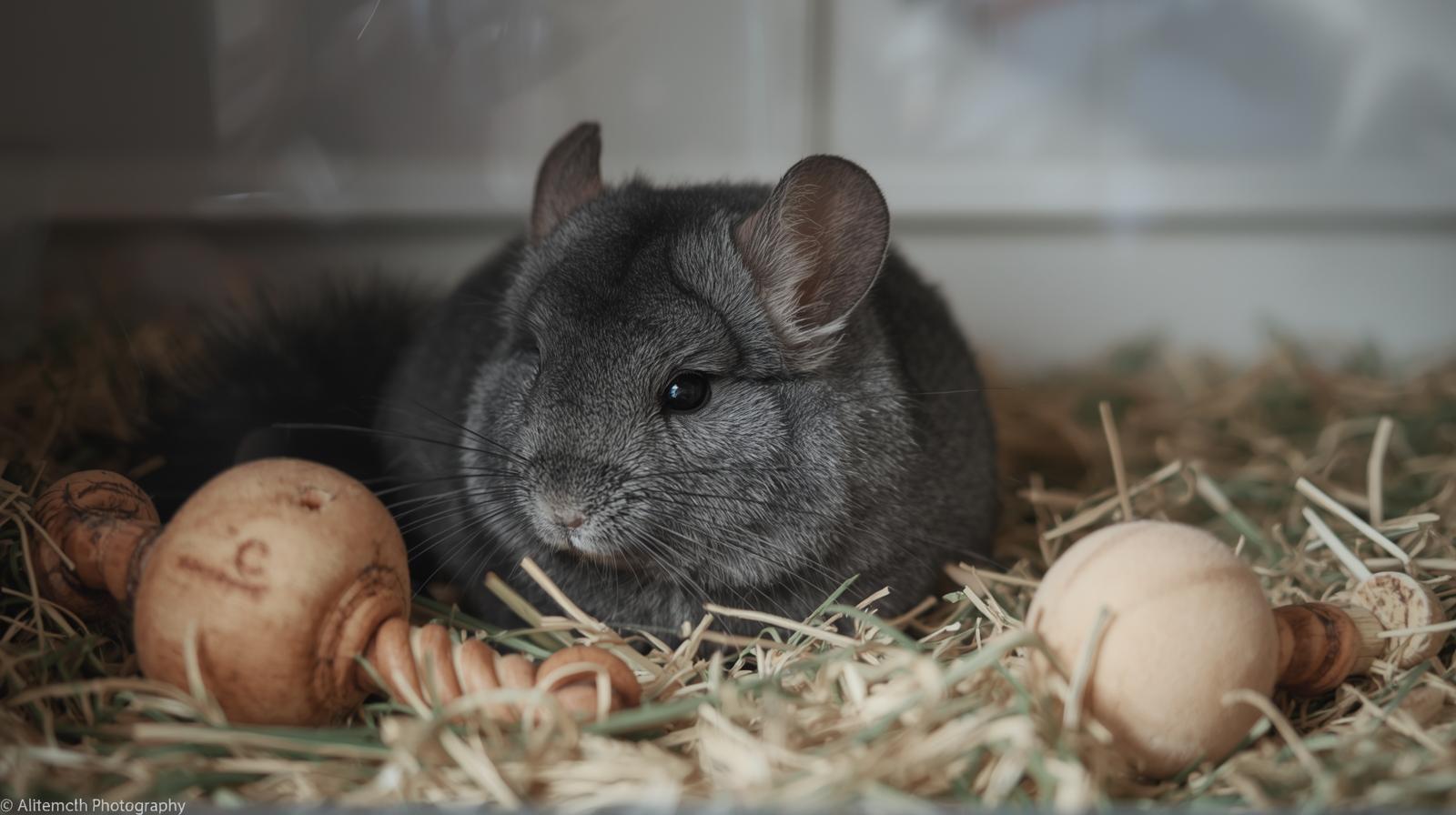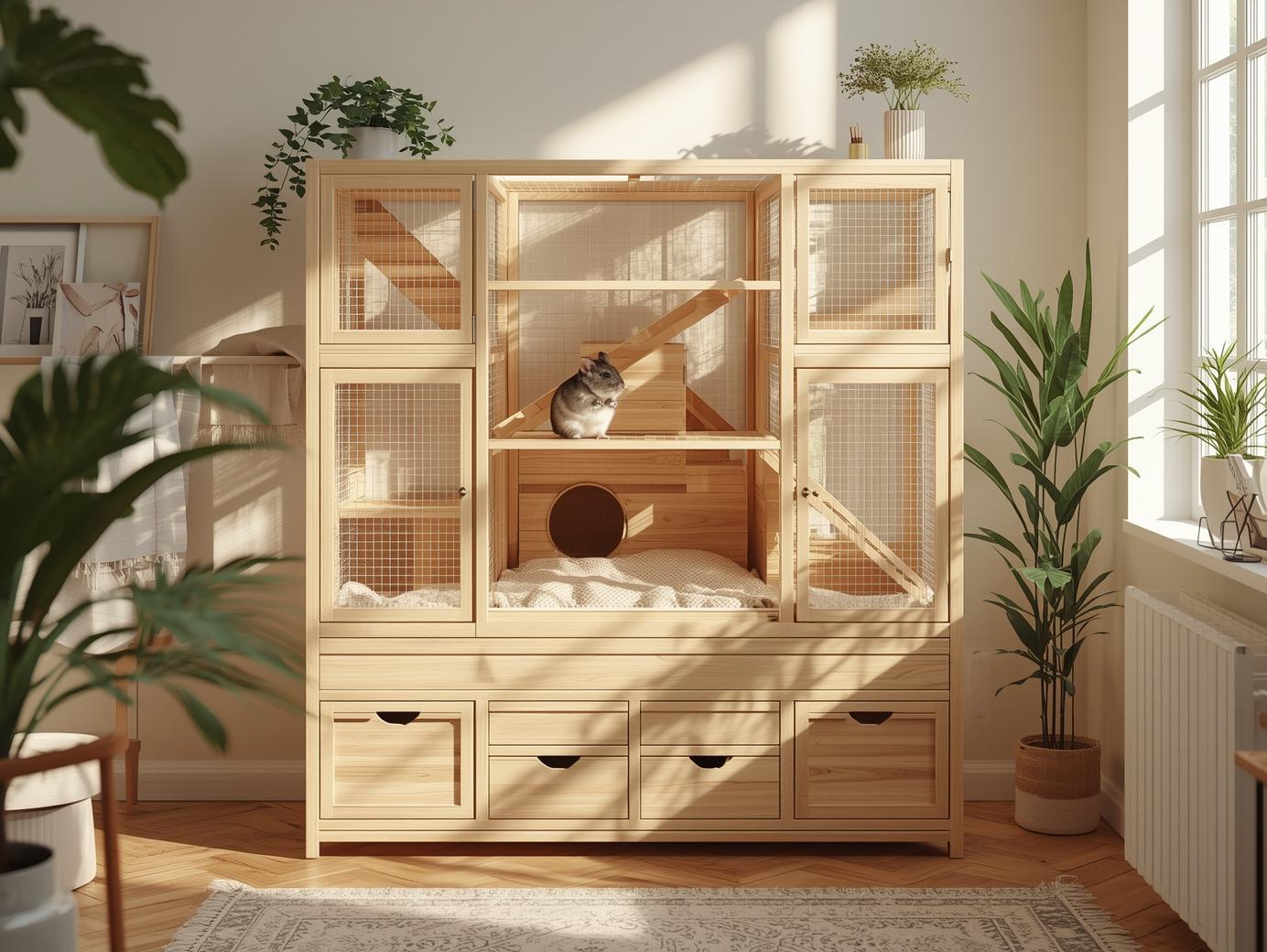First-time chinchilla owner? Planning to bring one home? This guide will walk you through everything you need to know, from understanding your chinchilla to setting up a safe, comfortable environment, providing proper care, and building trust.
Understanding the Basics
What is a Chinchilla?
First, let’s get to know your chinchilla. Chinchillas are small rodents from the Andes Mountains in South America, known for their incredibly dense, super soft fur. They’re part of the rodent family, like hamsters, guinea pigs, and rats, but unlike most rodents, which live only 2–5 years, chinchillas can live 15–20 years, so this is a long-term commitment.
Chinchillas are crepuscular, meaning they’re most active during the twilight hours of dawn and dusk. This makes them great for anyone who likes being up in the early morning or late evening.
Why Choose a Chinchilla?
Chinchillas are quiet, clean, and generally low-maintenance. They don’t produce strong odors and adapt well to apartments or shared living spaces. Each chinchilla has its own personality, and while they may not be physically affectionate like a dog or cat, the bond you build can be very rewarding.
That said, they do need careful attention to diet, housing, and handling to stay healthy and happy.
Preparing for Your Chinchilla
Choosing the Right Cage
Picking the right cage is one of the most important decisions you’ll make. Their cage isn’t just a home; it’s their entire world. Chinchillas are highly active and love to jump, climb, and explore, so a multi-level cage with plenty of vertical space is ideal.
A larger cage is always better, especially with multiple levels to encourage natural activity. Aim for a cage that’s at least 3 feet (about 90 cm) tall, with several platforms and shelves to climb on.
Here are some good cage size examples:
- Small Cage: Height 100 cm × Width 60 cm × Length 60 cm
- Medium Cage: Height 110 cm × Width 80 cm × Length 60 cm
- Large Cage: Height 120 cm × Width 100 cm × Length 70 cm
Note: If you’re in Argentina, finding a large ready-made cage like this can be difficult. In that case, consider having one custom-built by a local craftsman.
For materials, wire cages are practical. Make sure the bar spacing is no more than 1 inch (3.5 cm) to prevent escapes. Avoid plastic shelves or bases; chinchillas are natural chewers, and plastic can be dangerous if ingested. Look for cages made from solid wood or full metal from reputable brands or builders.
Essential Supplies to Have Ready
Before bringing your chinchilla home, make sure you have the essentials:
- Food Bowl & Water Bottle: Heavy ceramic bowl and glass water bottle to prevent tipping and chewing
- Hay Rack: Keeps hay clean and off the floor
- Hideaway House: A safe, quiet place to retreat and sleep
- Dust Bath House: Essential for keeping fur clean
- Chew Toys: Wood chews, pumice stones, and safe branches for healthy teeth
- Cooling Stone: Helps regulate body temperature in warm climates
- Litter Pan (Optional): Some chinchillas can be litter trained, but it’s not guaranteed
Check out our full guide on cage setup and enrichment.
Setting Up Your Chinchilla Habitat
Cage Location
Place the cage in a cool, dry room kept between 60–70°F (15–21°C). Anything above 75°F (24°C) can be dangerous.
Avoid direct sunlight, drafts, kitchens, bathrooms, or areas with loud noise or high humidity. Chinchillas have very sensitive hearing, and high humidity can make their fur damp, which may lead to illness.
Note: Do not leave other pets unsupervised around your chinchilla. If your chinchilla isn’t yet familiar with another animal, their presence can cause significant stress, especially when your chinchilla is new to the home.
Bedding, Shelves, and Toys
Use paper-based or kiln-dried pine bedding and change it weekly. Provide untreated wood or metal shelves and climbing structures. Add chew toys and tunnels to keep your chinchilla mentally stimulated. Offer a dust bath in a separate container 3–4 times a week for 5–10 minutes each session.
What to Feed Your Chinchilla
Diet Essentials
Chinchillas have sensitive digestive systems, so diet directly affects their health. Keep it simple, consistent, and high in fiber.
- Hay: Should make up 70–80% of their diet—keep it available at all times
- Chinchilla Pellets: Plain, seed-free pellets, about 2–3 tablespoons per day depending on size and age
- Fresh Water: Available 24/7, ideally in a clean water bottle
Hay should always be unlimited, and pellets measured daily.
Treats: Avoid sugary or fatty treats; they can upset digestion and make chinchillas skip their regular food. Safe options include bee pollen (not honey) or dried apple sticks, limited to once a week.
First Days and Bonding
How to Handle Your Chinchilla Gently
Patience is key; they won’t bond instantly. Spend time near the cage daily, speaking softly or offering treats through the bars. This helps them associate you with positive experiences.
Once comfortable eating from your hand, try gentle handling. Always scoop from underneath, support their body fully, and never grab from above. Keep sessions short (2–3 minutes) and positive. If they wriggle, let them go and try again another day.
Signs Your Chinchilla Trusts You
- Approaches you voluntarily
- Eats from your hand
- Jumps onto your lap or shoulders
- Makes gentle squeaks or chirps
- Relaxes or grooms nearby
Each chinchilla has its own pace. Some warm up quickly, others stay shy but affectionate. Celebrate small wins and let trust develop naturally.
Cleaning and Maintenance
Daily and Weekly Tasks
Chinchillas are clean, but regular maintenance is essential.
Daily:
- Spot-clean soiled bedding
- Remove uneaten fresh food or hay
- Check and refill water and food
- Brush off or shake out shelves
Weekly:
- Replace all bedding
- Wipe down cage bars, shelves, and toys
- Scrub food bowls and water bottles
- Refresh dust bath and store properly
Use safe, pet-friendly cleaners. Avoid harsh chemicals like bleach; white vinegar and water works well. Always rinse and dry thoroughly.
Dust Baths and Hygiene
Provide a dust bath 3–4 times a week in a closed container using chinchilla-specific dust. Leave for 5–10 minutes, then remove. Adjust frequency based on fur condition; greasy or clumped fur may need more baths, dry or flaky fur may need fewer.
Check out our full article on cage cleaning.
Health and Wellness
Spotting Signs of Illness Early
Chinchillas hide illness naturally, so daily observation is important. Watch for:
- Reduced appetite or refusal to eat
- Lethargy or less activity
- Teeth grinding (pain)
- Unusual droppings (small, runny, or none)
- Wetness around mouth, nose, or eyes
- Bald patches or fur chewing
- Sudden weight loss (often dental-related)
If your chinchilla stops eating or pooping for over 12 hours, contact a vet immediately.
When to See a Vet
Find an exotic pet vet experienced with chinchillas. Schedule a check-up after adoption and plan yearly wellness exams. Chinchillas don’t need vaccines, but dental checks are essential.
Emergency signs:
- Bloating or firm stomach
- Lethargy with no interest in food
- Excessive drooling or wet chin (malocclusion)
- Labored breathing
- Seizures or loss of coordination
Quick action can make all the difference.
Travel and Temporary Housing
How to Safely Transport Your Chinchilla
Chinchillas are sensitive, and travel can be stressful. For trips to the vet or moving homes, handle transportation with care.
Use a small, secure travel carrier, ideally hard-sided, lined with fleece or soft bedding. Add hay and a hideout if possible. Avoid wire carriers—they offer little protection and can be dangerous during sudden stops.
Keep the carrier in a stable, shaded area of the car. Never leave your chinchilla unattended in a hot vehicle, even for a few minutes. For trips longer than 30–45 minutes, check on them, offer water if possible, and ensure the car is ventilated. For air travel, check airline policies in advance, as most do not allow chinchillas in-cabin.
Hotel-Style Setup While You’re Away
Leaving your chinchilla behind? Provide a trusted sitter with a clear care plan:
- How much and when to feed
- How often to refresh water
- Dust bath schedule
- What to watch for in behavior or droppings
For short stays away, a temporary cage with hay, a hide, food, and water will help them stay comfortable. Stick to their normal routine to reduce stress, and place the cage in a quiet corner away from noise or high foot traffic.
Seasonal Care Considerations
Keeping Chinchillas Cool in Summer
Chinchillas don’t sweat, so heat can be dangerous. Their thick fur traps heat, making them vulnerable.
- Use air conditioning or a fan near the cage (not blowing directly)
- Provide granite or marble slabs to lie on
- Keep the cage out of direct sunlight
Signs of heat stress include lying flat, rapid breathing, or red ears. If this happens, move your chinchilla to a cooler space and contact a vet immediately.
Comfort and Warmth During Winter
Chinchillas prefer cooler temperatures, but their space should stay above 60°F (15°C). Cover drafts or move the cage to a warmer area. Avoid space heaters; use thermal fleece or extra bedding to keep them cozy. Monitor carefully—overheating can still be a risk.
Toys, Enrichment, and Playtime
Best Toys for Mental Stimulation
Chinchillas are curious and energetic. Without proper enrichment, they can become bored or stressed. Toys are essential:
- Chew toys: apple wood, willow, pumice
- Hanging toys: loofah or untreated rope
- Foraging toys to encourage natural behavior
- Climbing ledges and bridges
- Tunnels or hiding tubes made from wood or cardboard
Rotate toys regularly, inspect for damage, and replace if heavily chewed.
Safe Playtime Outside the Cage
Supervised out-of-cage time is one of the best parts of chinchilla care. Make the space safe:
- Cover all wires and remove plants or small items
- Block escape routes
- Never leave them alone
Keep sessions 30–60 minutes depending on energy. Use playpens or secure rooms, and let your chinchilla rest or snack afterward.
Chinchilla-Proofing Your Home
Preventing Chewing Disasters
Chinchillas chew constantly to manage their teeth. Without precautions, they’ll target:
- Power cords
- Baseboards
- Carpets
- Furniture
- Wallpaper
Protect your home by:
- Using cord protectors or hiding wires
- Blocking furniture edges
- Removing small, swallowable items
- Creating a secure play area with fleece liners and toys
Chinchillas can jump 3–4 feet and squeeze into small spaces, so supervision is essential. Carpeted areas are safer than slippery floors.
Safe Zones for Exploration
Designate a secure play area. Bathrooms or hallways work well if cleared of hazards. Lay down fleece liners, add toys, and let them roam. Avoid tile or slippery surfaces to prevent joint injuries. The more time you spend with your chinchilla during these sessions, the more they’ll associate you with fun and safety.
Building a Routine
Feeding, Cleaning, and Bonding Schedule
Chinchillas thrive on consistency. A routine reduces stress and creates predictability:
- Morning (7–9 AM): Refill water, refresh hay, spot clean bedding
- Evening (6–9 PM): Offer pellets, provide dust bath (every few days), and begin playtime or bonding
- Before Bed (10–11 PM): Remove dust bath, check food and water, ensure a clean, safe sleeping area
How Consistency Builds Trust
Animals love structure, and chinchillas are no different. Interacting at the same times daily sends a message: you are safe and predictable. Repetitive actions build familiarity, which is the foundation of trust. Over time, your chinchilla will anticipate your visits, greet you with excitement, and bond in ways that warm your heart.


